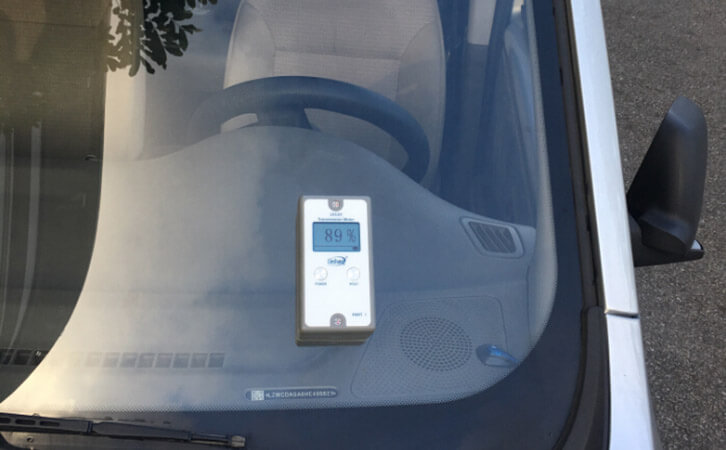How Much Film Transmittance Is Qualified?
Some car owners have attached car film to their window glass due to factors such as sun protection, explosion-proof, cooling, etc. Not all films on the market are in line with Chinese national standards. If the transmittance of the film does not meet the relevant regulatory requirements, it means that it is possible that the car will not pass the annual review. So how much light transmittance of the film will be qualified?
1. Chinese National relevant laws and regulations
Regarding the question of "how much the light transmittance of the film is qualified", the relevant national regulations give an answer. The "Safety Technical Conditions for Motor Vehicle Operation GB7258-2017" stipulates that all window glass cannot be attached to the mirror reflection film. The side window of the front windshield and the observation mirror should not be less than 70%. The visible light transmittance of the side window and the rear windshield is at least 50% (the inside of the car can be clearly seen from the window)
2. Why must the qualifying value be 70% and 50%
The visible distance of the human eye is proportional to the visible light incident on the eye, that is, the closer the visible distance is, the more visible light is injected into the human eye. The farther the viewing distance is, the less visible light is injected into the human eye. In the case where the other conditions are quantitative. 70% visible light transmission is a turning point in the visible distance. When the visible light incident on the human eye is less than 70%, the visible distance is sharply shortened.
It is assumed that when the visible light transmittance of the foil glass is 100%, the visibility is a distance of 10 meters. When the light transmittance is reduced to 50%, the visibility at this time will be less than 3 meters and specifically less than 1/3. The probability of a car accident would be greater.
Therefore, the light transmittance of the film directly determines the light and darkness of the car and the visual distance of the driver. Indirectly affects the personal safety of the people in the car. It is one of the important conditions that cannot be ignored in our safe driving. For the problem of how well the light transmittance of the film is qualified, we generally use the Linshang LS110 tint checker to detect the light transmittance.
The LS110 tint checker can not only detect the light transmittance of the film but also detect the rejection rate of ultraviolet rays and infrared rays.
- Linshang Insulated Glass Unit Measuring Tools
- Spectacle lens anti-blue light detection---blue-violet light transmittance meter
- Measurement of Optical Density
- Difference of LS116 Transmission & LS117 OD Meter
- Difference between LS116 and LS117 Light Transmittance Meter
- What’s the Difference Between Point Light and Parallel Light Transmittance Meter
